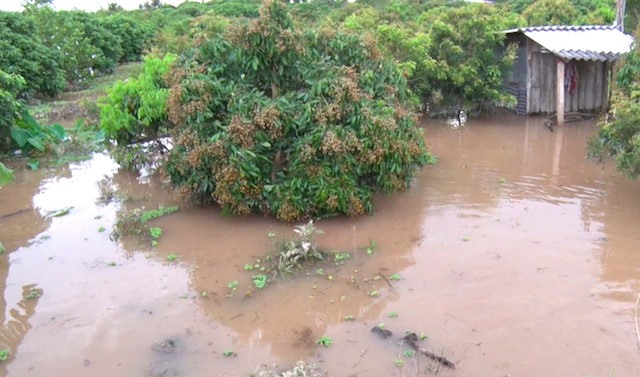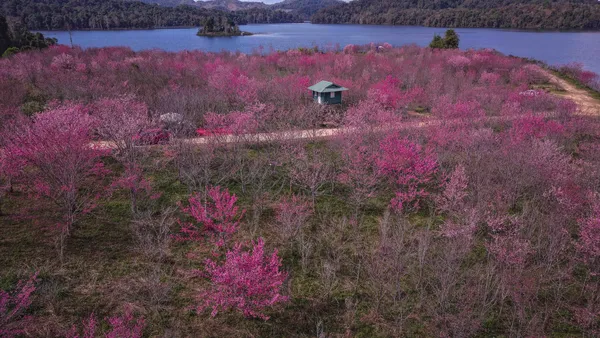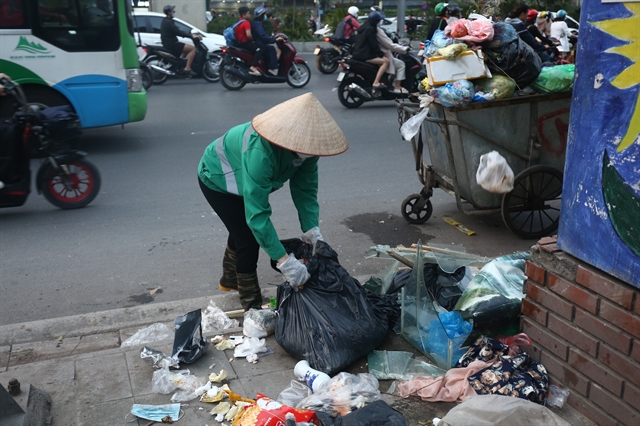 Op-Ed
Op-Ed

The sinking situation of the Cửu Long (Mekong) Delta in the south of Việt
 |
| An orchard heavily flooded after floodwater broke a section of the embankment in Long Hồ District in the delta’s Vĩnh Long Province. — Photo zing.vn |
Phước Bửu
The sinking situation of the Cửu Long (Mekong) Delta in the south of Việt
The mindset persists today, as experts have recommended the clearance of these embankment systems, but planners for the delta development insisted on protecting the embankments for shortsighted benefits.
The impacts of climate change have recently become clearer than ever before in the delta as rising sea levels and higher tides have become more frequent. Late last week, the delta’s biggest urban centre, Cần Thơ City, was flooded to the historic tidal level.
The tidal level measured on the
Several days later, floodwaters engulfed Cần Thơ, Hậu Giang, Vĩnh Long, Đồng Tháp and An Giang provinces, breaking many sections of the embankment to enter residential as well as farming areas. The water destroyed or damaged more than 6,800ha of rice, vegetables and fruit trees. It also blocked around 90km of road in the delta and kept millions of students home from the flooded schools.
Experts predicted this scenario several years ago and warned planners in the delta, but it seems no one listened to them. Embankment systems surrounding the residential and farming areas have yielded short-term benefits while guaranteeing critical destruction would unfold.
Decades ago, authorities in the delta provinces allowed the building of earthen embankment systems in many places in the delta. By the early 2010s, almost the entire delta area was embedded with the embankments.
The embankments prevented annual floodwater from the upper
Without the embankments, delta farmers were unable to farm the third crop in a year due to flooding. The embankments helped the country stay strong in its competition with
But reduced flows of floodwater in and out of the fields meant no alluvia deposits. And there were no floodwaters to clear the chemical residues left by treatments to kill pests and prevent plant diseases.
As a result, the soil has become poorer and pests and diseases have grown in number, driving the overuse of chemical fertilisers and pesticides. The country’s rice cannot compete with Thai rice in quality. Local rice is not favoured due to the fear of chemical residue.
The damage wrought by the embankments has become much clearer in the context of climate change as seen in the current situation of the delta. The delta’s earthen embankments work like a circling fort for water: it ensures no entrance of water during normal times, but it also prevents water from receding from the inside of an embankment system.
Once water breaks a section of the embankment to reach the interior, which is usually a wide rice paddy or a residential area with lots of orchards, it will remain in that area much longer.
For years, experts working on climate change impact studies have warned authorities in the delta as well as the urban and agricultural planners around the country that the only way to cope with climate change is to adapt to the impacts.
Adaptation to climate change in the delta includes the demolition of embankments as well as concrete dykes built to block the in-flow of floodwater, particularly in the inland wetland zones as the natural reservoirs receive and reserve floodwater from the
Since 2010, the experts dedicated to the delta, including Dr Dương Văn Ni, Dr Lê Anh Tuấn and Dr Nguyễn Hữu Thiện, had voiced their concern over the rampant development of the embankments and dykes in almost every province in the delta.
According to Dr Tuấn, floodwater from the
The impacts seem to be doubling as tidal rise and water flows from the upper provinces have occurred at the same time in the lowland areas.
Unfortunately, experts’ warnings could not budge the conviction of provincial authorities and agriculture planners that dykes should be built—at any cost. Now the Mekong Delta and its people are paying the true price. — VNS




